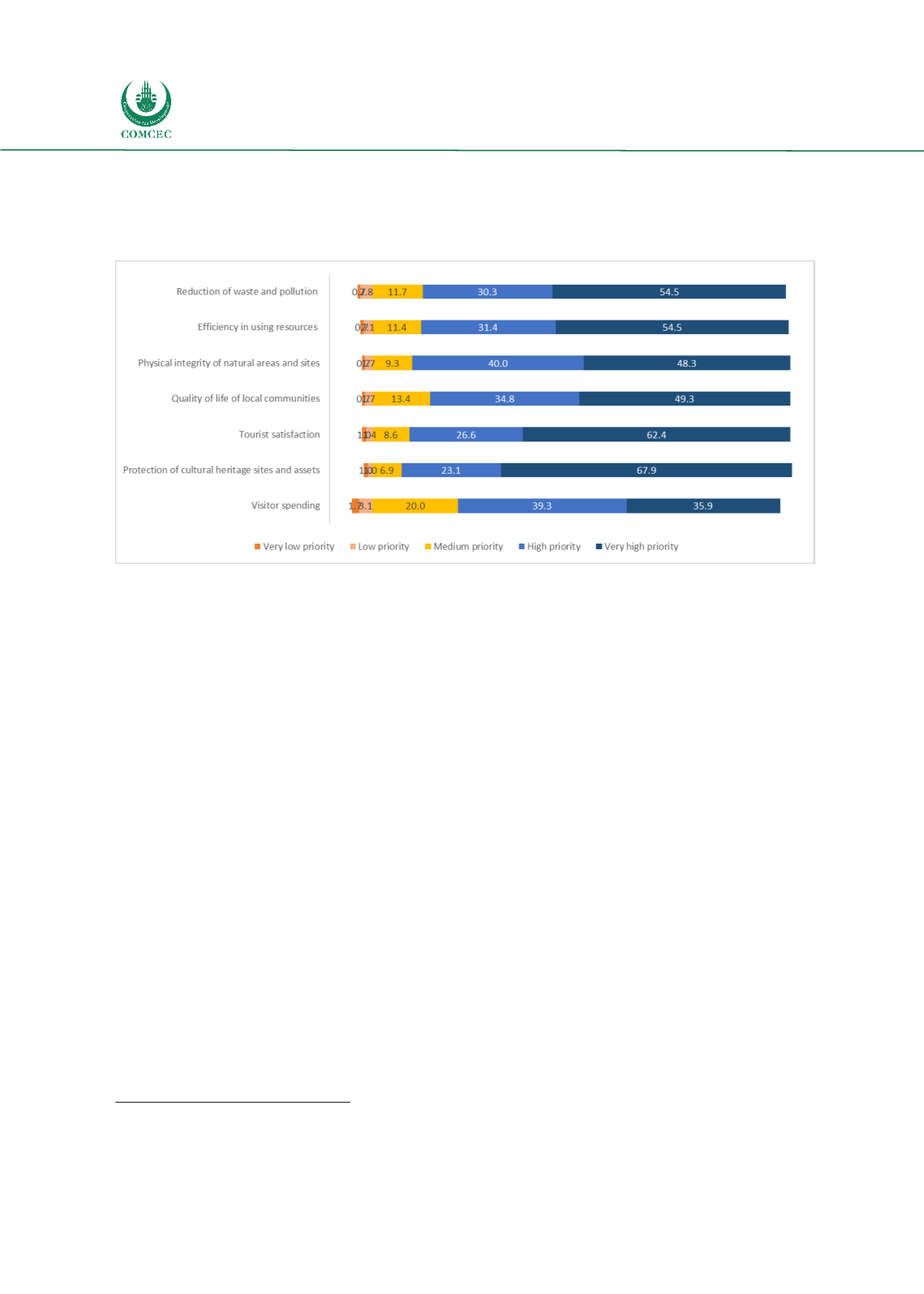

Sustainable Destination Management
Strategies in the OIC Member Countries
50
respondents (75-80%) believe that monitoring all tourism impact areas should be highly prioritized
by governments. The protection of cultural assets was identified by the highest percentage of
respondents as very high priority.
Figure 11: Survey Findings - Priority Area for Indicators
Source: DinarStandard
1.3.2.
Challenges in Monitoring and Evaluation
Three main challenges facing sustainability monitoring and evaluation are the difficulty
encountered in selecting an adequate number of indicators, the lack of reliable data and
inadequate reporting on sustainability issues on the part of SMEs. In terms of selecting an
adequate number of indicators, it is important to point out that there is no ideal number of
indicators; very few indicators would not cover all aspects of sustainable tourism and a lengthy
list of indicators would not be practical. The use of economic indicators solely wouldmean social
or environmental impact would be ignored. Stakeholders typically can propose hundreds of
indicators, which makes it challenging to reach agreement on a condensed list that covers all
areas. Experts in the field generally recommend the use of 12-24 indicators to cover key issues
at any particular destination. To illustrate how challenging this task can be, consider the example
of Samoa where a list of 270 indicators for destination monitoring had to be reduced to 20.
157
The second challenge that faces sustainability monitoring is the lack of reliable data, particularly
cross-boundary. To enable regional and international cooperation in common areas of
sustainable tourism, reliable data needs to be shared and used for identifying sustainability
issues and prioritizing areas for indicator coverage. The third challenge is the lack of
sustainability reporting. This challenge is exacerbated by the fact that stakeholders in the
tourism industry are primarily SMEs (95% of the sector) and they have yet to adopt consistent
and clear sustainability reporting practices. This makes it difficult to monitor tourism company
performance in the area of sustainable tourism.
157
WTO. (2004).
Indicators of sustainable development for tourism destinations: A guidebook
. Retrieved from
http://www.adriaticgreenet.org/icareforeurope/wp-content/uploads/2013/11/Indicators-of-Sustainable-Development-for-Tourism-Destinations-A-Guide-Book-by-UNWTO.pdf.
















